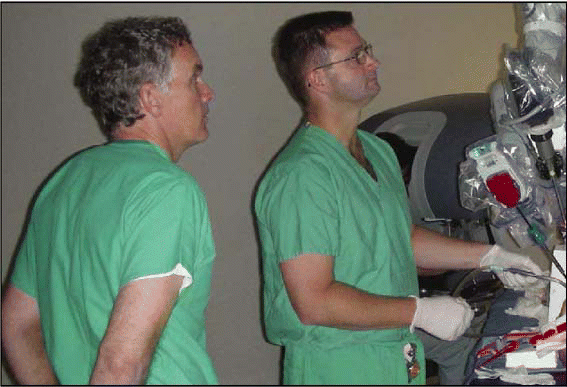Endoscopic surgery provides a less invasive and highly visual approach to skull base tumors and can reduce morbidity compared with open surgery, according to the experts interviewed for this article. While the role of endoscopy continues to evolve as surgeons treat increasingly larger and more difficult skull base lesions, a number of contraindications and precautions need to be kept in mind.
Explore This Issue
November 2007An Evolution
Endoscopic skull base surgery has evolved from endoscopic sinus surgery, explained Brendan Stack, MD, Vice Chairman of the Department of Otolaryngology–Head and Neck Surgery, and Director of the Divisions of Head and Neck Oncology and Clinical Research at the University of Arkansas for Medical Sciences.
“It’s gone from taking care of sinus disease, to repairing brain fluid leaks, to removing small benign lesions in the skull base, to removing increasingly larger benign lesions, as well as many malignant lesions,” he said.
Endoscopic skull base surgery developed from using this technique to treat sinus inflammatory disease, orbital decompressions, epistaxis, and cerebrospinal fluid (CSF) leaks and to conduct endoscopic biopsy, said Martin J. Citardi, MD, a Cleveland Clinic Head and Neck Institute rhinologist.
Now, skull base indications are evolving across time and are different at various institutions, said Dr. Citardi. Overall, the medical community is realizing that endoscopic approaches are a viable treatment strategy for the management of skull base neoplasms, he said.
Skull Base Indications Growing
Endoscopic skull base surgery is most effective for smaller growths, although surgeons are pushing these limits and approaching lesions of different sizes, said Dr. Stack.
For example, juvenile nasal angiofibromas are large tumors filled with blood vessels, which, prior to improved endoscopic optics and ways of achieving hemostasis, needed open surgery for removal, said Dr. Stack. “Five years ago or more, those patients were destined to have an open operation because they would bleed so much,” he said.
Size is not necessarily a limiting factor for removing tumors, said Pete Batra, MD, Assistant Professor of Surgery at the Cleveland Clinic Head and Neck Institute.

“The earlier literature has focused on smaller tumors because as you accrue experience you start with smaller growths and tackle increasingly larger tumors as time goes on,” he said. “We can now remove much larger tumors that are accessible by endoscope.”
Leave a Reply